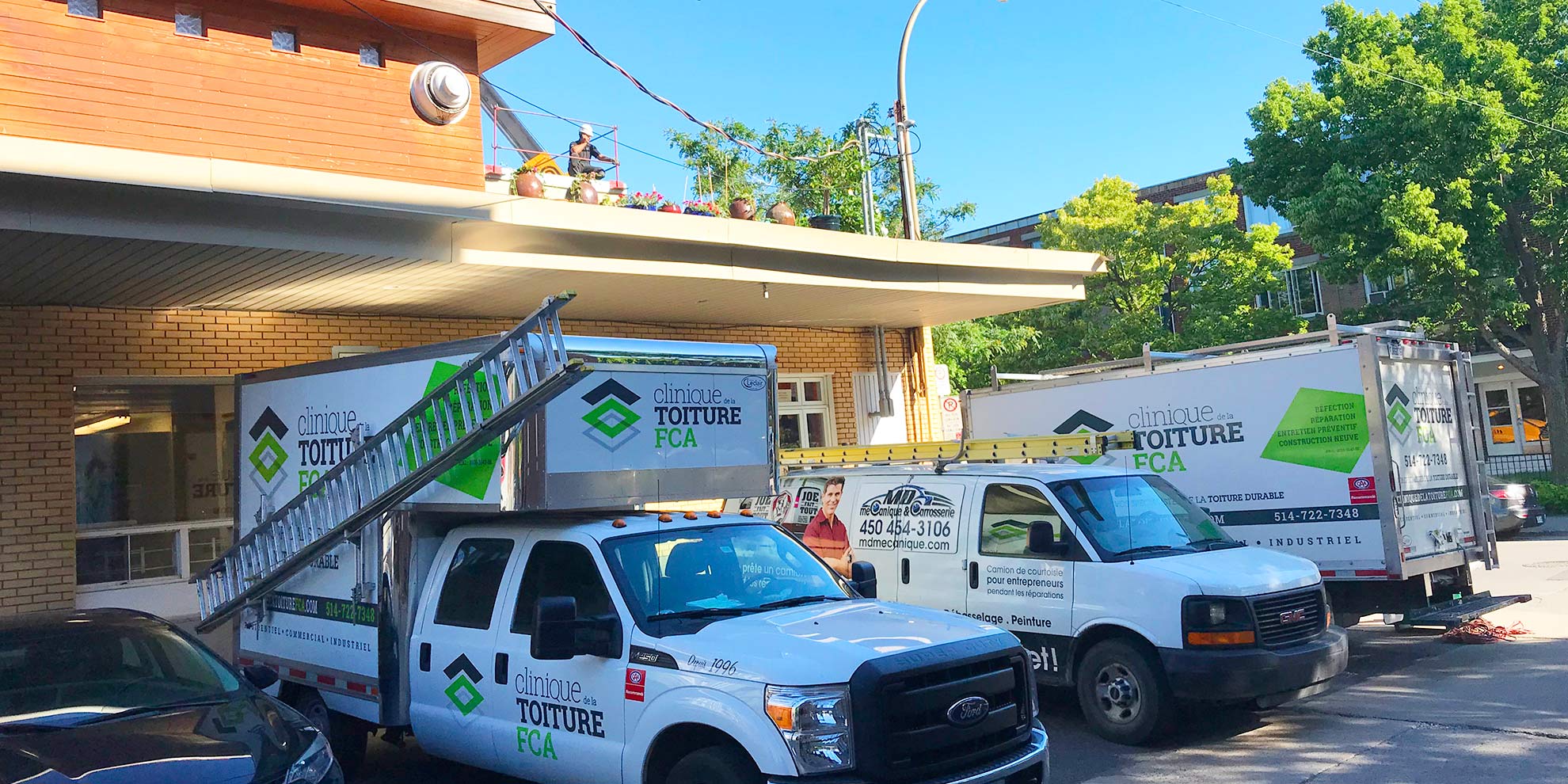
Home > Blog posts > All you need to know about plumbing vents
All you need to know about plumbing vents
Plumbing vents are the unrecognized heroes of our plumbing systems; they play a crucial role in water circulation and pressure regulation. From toilets backing up to sinks that empty slowly, without forgetting unpleasant smells, vent problems can become a real nightmare. Proper installation and maintenance of a plumbing vent remain a key factor in avoiding this kind of problem.
We take a closer look at plumbing vents to help you better understand how it works and what type of problems it can cause. We will also explain how to proceed with proper installation, in compliance with current standards and regulations.
What is a plumbing vent?
Vents are an essential component of a plumbing installation, in a household or building. They consist of a pipe system that helps air flow freely in the plumbing system. They are also sometimes referred to as “loop vent” or “vent stack”.
Located on the top of a roof, the vent allows for air to be released while also ensuring proper water circulation. It plays an important role in:
- Preventing bad odours
- Improving pipe drainage
- Regulating air pressure
- Preventing sumps
- Ensuring proper functioning of sanitation systems
Vents are linked to all of the plumbing elements within a home; but another type of vent exists, that does not have an exterior output.

The Different Types of Plumbing Vents
In fact, there are two main types of plumbing vents.
The first is an automatic vent, also know as a mechanical vent or valve. It is equipped with different elements like valves that open and close according to pressure. The different plumbing systems are linked to create a network that reaches all the way up to the roof.
The second type of vent is generally used as an alternative to the traditional vent: it is the loop vent. Loop vents do not reach the roof. Rather, as its name indicates, it forms a continuous loop in the plumbing system to help depressurize the pipes. This is the perfect solution for isolated spaces like, for example, a central kitchen island or masonry wall.
How to Install a Plumbing Vent on a Flat Roof?
Proper installation is key to ensuring the proper functioning of the vent. The vent model dimensions, but also the positioning and sealing of the vent, are different elements that must be taken into consideration to avoid any problems.
Firstly, take note that there are two types of ventilation: primary ventilation and secondary ventilation. Primary ventilation is built starting from the roof, by using large pipes. When it comes to secondary ventilation, it refers to ridge vent installation on the roof and a static aerated ground connection. Most of the time, the vent can be linked to the primary ventilation system only.
How to install a plumbing vent? Below, we provide you with the key steps you should follow after a vertical pipe has been installed, by a plumber of course.
- Determine where the vent will be installed and sweep away any debris to make sure the area is clean.
- Cut a portion of the membrane, and then the roof deck where the vent is to be installed.
- Trace and pierce a hole where the vent will be installed.
- Apply a generous amount of tar or any other type of sealer around the opening and under the vent to glue it to the roof surface.
- Place a marker 3- inches from the base of the vent and mark the perimeter with a chalk line.
- Install the base sheet membrane according to the manufacturer’s specifications, hot or cold, depending on the membrane. Install the membrane for the base (on the chalk outline) until half-way up the vent.
- Mark another 3- inch perimeter around the base sheet membrane. Apply the cap sheet membrane, following the same guidelines.
- Complete the installation by installing the top part of the vent. Level it and fix it with the provided ties or straps.
To ensure proper plumbing vent installation, it is recommended to ask professionals to do it for you. This will also ensure that the installation is done in compliance with all standards and regulations regarding roof safety, for a trouble-free installation.
What are the Signs of an Inadequate or Faulty Vent?
Some problems can occur if the vent has been damaged, is inadequate or blocked. A vent that is too small, poorly sealed, or badly positioned can also cause unfortunate consequences. Here are a few signs that could indicate a problem with your vent.
Detecting sewer odours in your home is the most common sign that something is wrong. This means that air is not circulating and evacuating the way it should. Your vent might simply be blocked or clogged.
Another telltale sign: water is evacuating slowly in your sink or bath. Although most of the time this is due to residue like hair or food, it can also mean a problem with your vent. If unblocking agents or drain openers have not improved the problem, your vents might be blocked.
Pressure can become insufficient when a vent is blocked. You might then notice that your toilet tank is not filling the way it should.
Do you hear gurgling sounds when water is draining? That can also be a sign of poor air flow.
Finally, a vent problem can cause humidity problems on the ceiling. So, you should start by inspecting your vents!

Proper Maintenance on your Plumbing Vents
Your plumbing vents on your roof should be inspected at least once a year, at the same time all of the other roof elements are inspected. Preventive maintenance will allow you to avoid consequences related to a blocked vent.
If you wish to avoid this type of situation, it is important to proceed to a regular cleaning of your flat roof, by removing all debris. If your vent happens to become blocked anyway, you can clean the drain with an auger. Is that not sufficient? Then you will probably have to call a plumber.
During your inspections, you will also want to check the gasket or sealer to ensure that everything is as it should be and that it has not sustained any damages.
Maintenance on your vent will not only help you avoid unpleasant issues like a terrible smell in your home or stagnant water, but also contribute to increasing your pipes’ durability.
What Standards or Regulations do you have to Comply with?
Plumbing vents fall under Quebec Construction Codes and regulations, Chapter III – Plumbing, and the National Plumbing Code of Canada. You will find the main regulations outlined in the article 2.5.6.5, stating that “the upper end of every vent pipe that is not terminated in outside air shall be connected to a ventilating system that terminates through a roof to outside air” (save for some exceptions).
Every vent pipe terminated in outside air crosses the roof and must reach at least 150 mm higher than the roof. This will prevent any rainwater accumulation on your flat roof from entering the vent.
When it comes to placement, the pipe must also reach at least 1 m above any air intake, door or window and at least 2 m higher than a roof intended for any use.
Finally, the pipe must include flashing, which can be installed by your roofer. Other regulations also apply, including the diameter for the ventilation pipes, which need to comply with the Building Code 2.5.7.1 table.
The flashing itself falls under its own set of standards and regulations. Flashings that are made onsite must, depending on the material, have a thickness of at least:
- 33 mm for copper or galvanized steel sheets
- 48 mm for aluminum sheet
- 35 mm for zinc alloy sheet
- 73 mm led sheet
When it comes to prefabricated flashings, they must comply with the CSA B272 standards for “Prefabricated Self-Sealing Roof Vent Flashings”.
Trust in La Clinique de la toiture for your Plumbing Vent Installation
For proper installation of your vent that is in compliance with standards and regulations and that ensures good water pressure regulation, you can trust in La Clinique de la toiture FCA. Our team is trained for proper installation and replacement of your roofing components. Find out more about our roof accessories.
Proper installation and regular maintenance will help you avoid several eventual problems, from bad odours to humidity problems, without forgetting stagnant water. Asking professionals to install your plumbing vents is a way to ensure your peace of mind!

Need help?
Leave us your email address and we will contact you as soon as possible to assess your needs!
Put an end to your water infiltration your clogged drains your roof problems
Leave us your email address and we will contact you as soon as possible to assess your needs!
